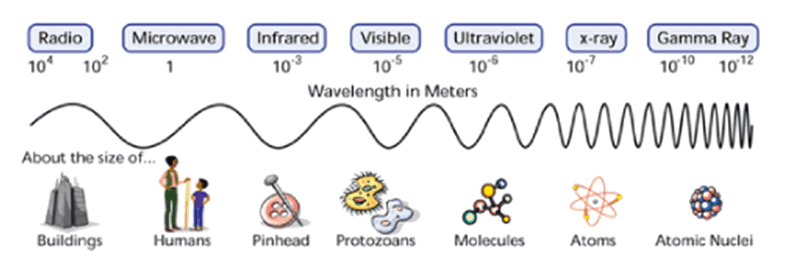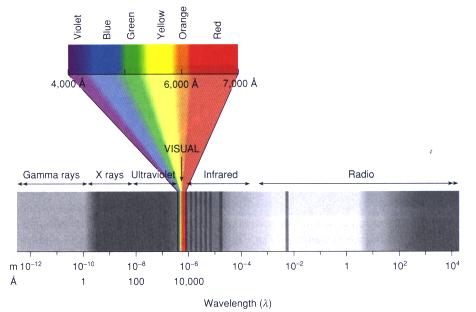It is inconceivable that we could send a probe to galaxies, stars or even gas clouds millions of light years from Earth and yet we know so much about them.


The Sun gives off a variety of different energies spanning from radio waves to gamma rays, as shown below. This range of energies is known as the electromagnetic spectrum and the visible spectrum, that we see, only represents a small portion of the electromagnetic spectrum. Energy from the Sun comes to us in waves and travels at 300,000 km/s, known as the speed of light.. The smaller the waves the higher the energy so we can see that radio waves have less energy than gamma rays.

A great deal of information
can be gathered about our sun or distant stars by analysing the light
coming from them. Analysing even the visible spectrum reveals information
about distant galaxies and stars that would otherwise be impossible to
gather. The visible spectrum is but a small fraction of the array of energy
given out by a star. Below is a picture depicting the narrow band of energy
that we call the visible spectrum.
